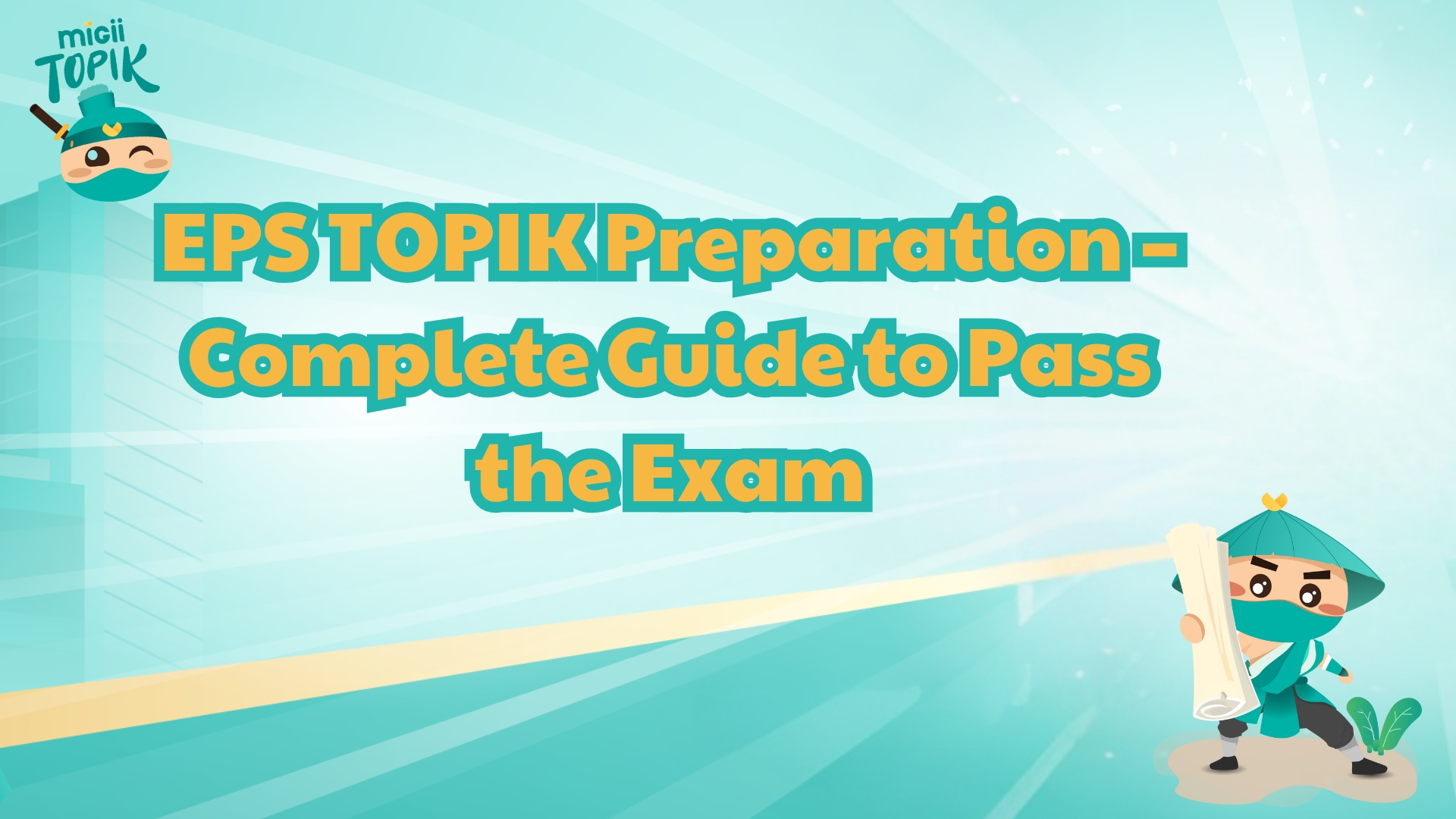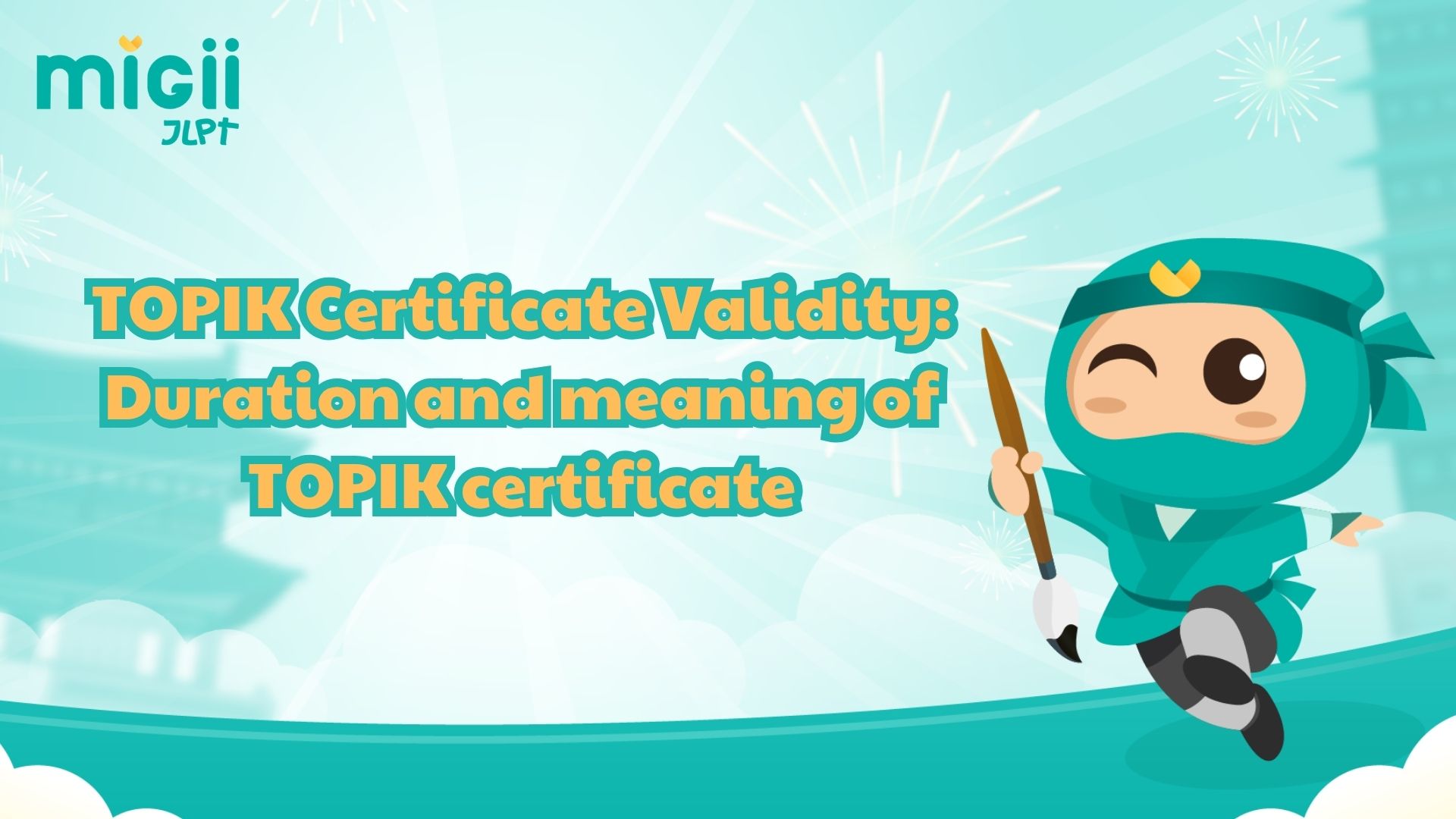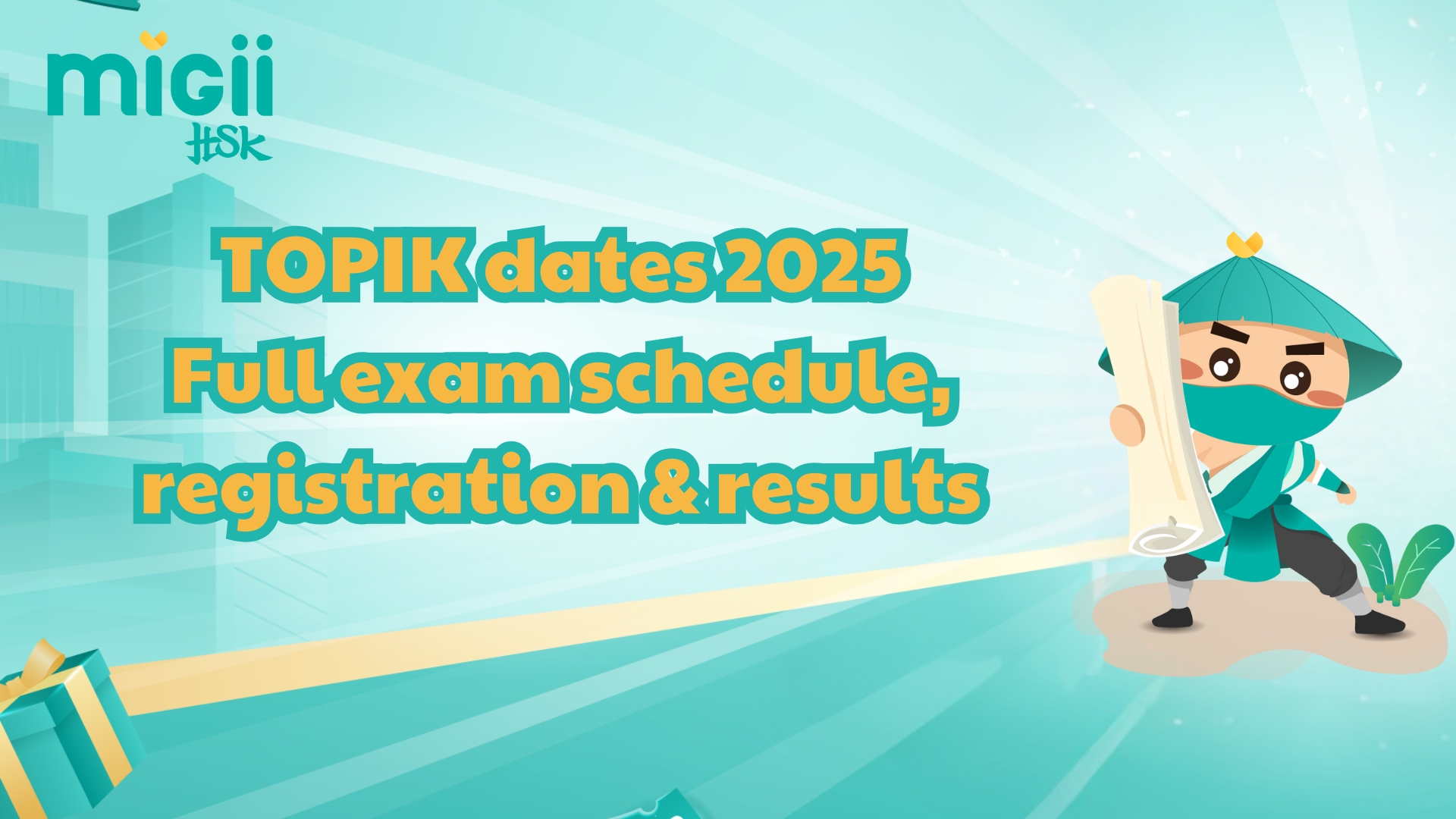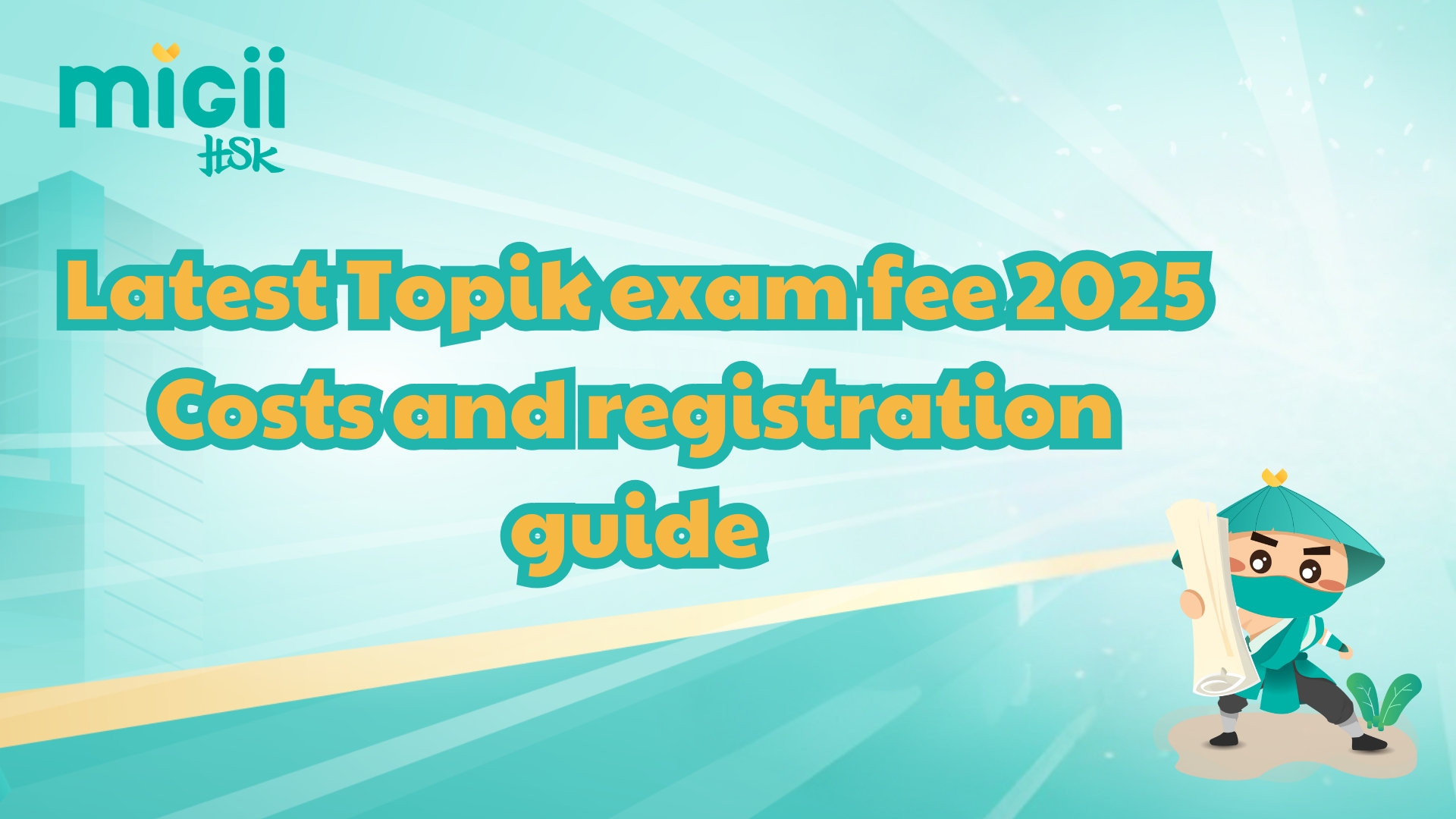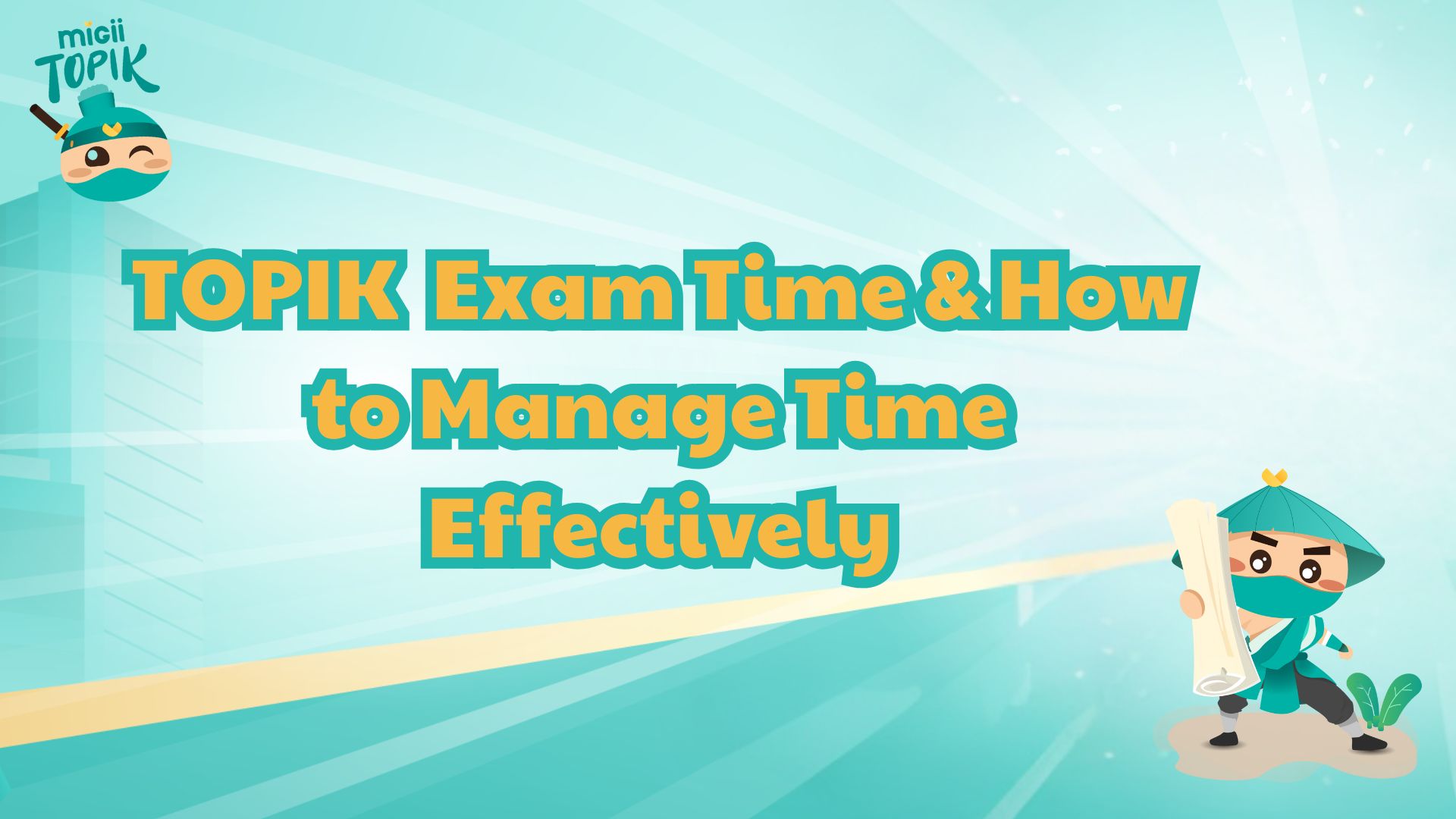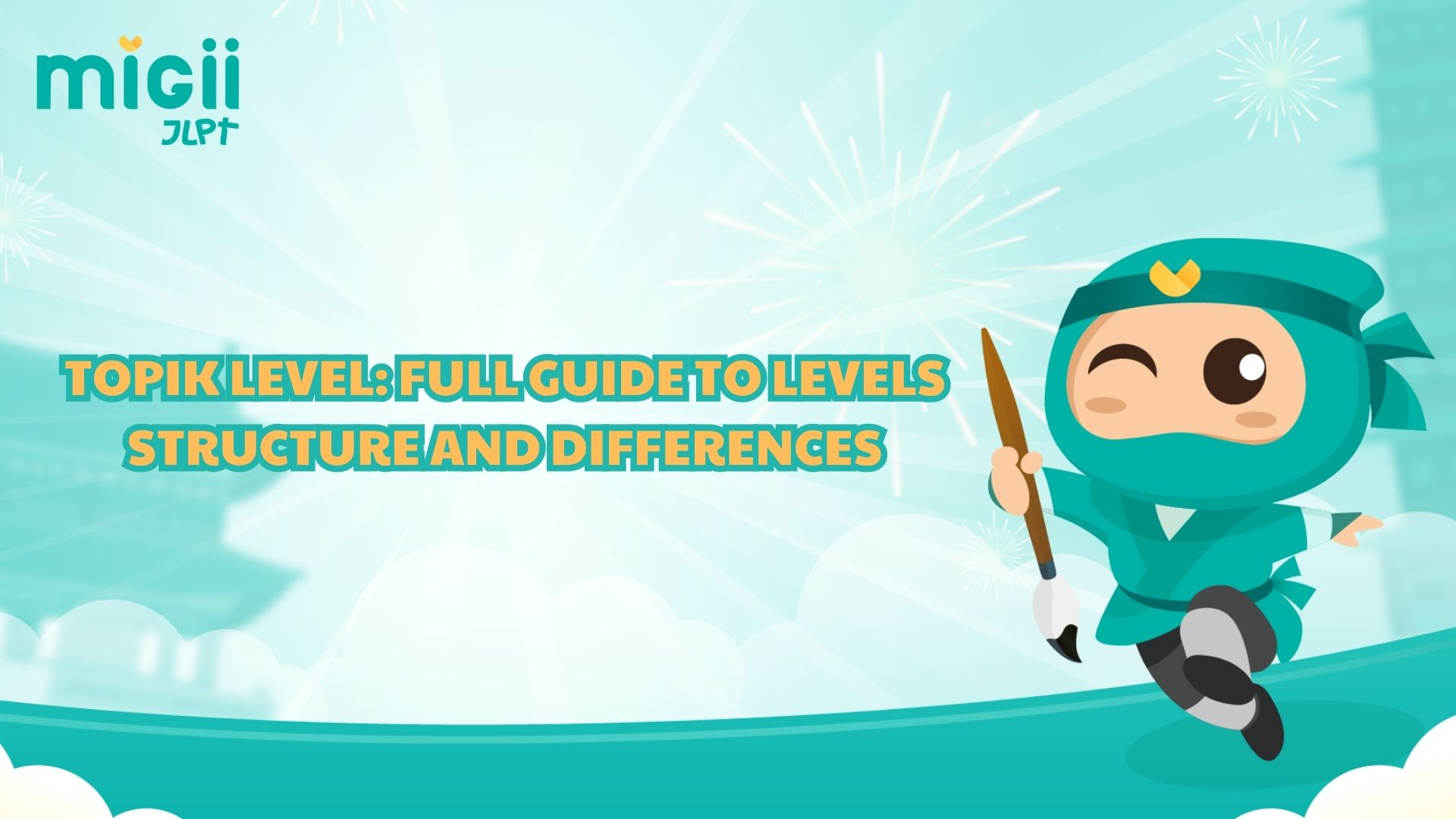Mastering the JLPT N3 exam format and learning the right JLPT N3 preparation tips are essential for anyone aiming to score high and pass this challenging Japanese language test. Whether you're just starting or you've had some JLPT N3 experience, this guide will help you build an effective study strategy. To make your JLPT N3 preparation smoother, Migii JLPT has compiled proven techniques and expert advice to help you succeed.
JLPT N3 Exam Structure
One of the most important JLPT N3 tips is to fully understand the test structure. This allows you to plan your approach and manage time efficiently during the exam. The JLPT N3 consists of three main sections: Kanji & Vocabulary, Grammar & Reading, and Listening.
If you're wondering how long to study for JLPT N3, mastering this structure is your first step. Some learners aim to conquer the JLPT N3 in 3 months, while others spread out their study time. No matter your pace, knowing what to expect is key.
Kanji & Vocabulary (30 minutes)
This section tests your ability to read kanji, convert hiragana into kanji or katakana, and use vocabulary correctly in context. You’ll also be asked to choose synonyms and identify the appropriate meaning in a sentence.
|
Question Type |
Number of Questions |
Purpose |
|
漢字読み (Kanji Reading) |
8 |
Test your ability to read kanji |
|
表記 (Notation) |
6 |
Convert hiragana into kanji and katakana |
|
文脈規定 (Contextual Choice) |
11 |
Choose the word that fits the sentence context |
|
言い換え類義 (Synonyms) |
5 |
Find synonyms or similar expressions |
|
用法 (Usage) |
5 |
Identify correct word usage in a sentence |
Grammar & Reading (70 minutes)
This part evaluates your understanding of grammar from beginner to intermediate levels, along with your reading comprehension skills. You'll need to recognize correct grammar patterns and understand various texts to answer related questions.
|
Question Type |
Number of Questions |
Purpose |
|
文法形式の判断 (Grammar Form) |
13 |
Select the correct grammar form for the sentence |
|
文の組み立て (Sentence Order) |
5 |
Arrange words into a grammatically correct sentence |
|
文章の文法 (Paragraph Grammar) |
5 |
Choose the sentence that matches the paragraph meaning |
|
内容理解(短文) (Short Text) |
4 |
Read a 150–200 character passage and answer one question |
|
内容理解(中文) (Medium Text) |
6 |
Read a 350-character text and grasp main ideas |
|
内容理解(長文) (Long Text) |
4 |
Read a 550-character text and understand its direction |
|
情報検索 (Information Search) |
2 |
Extract info from flyers or ads (~600 characters in kanji) |
Listening (40 minutes)
This section tests your listening comprehension through various audio clips, including conversations and monologues. You'll need to catch key information, understand the speaker’s intention, and select the most appropriate answer.
|
Question Type |
Number of Questions |
Purpose |
|
課題理解 (Topic Understanding) |
6 |
Understand the main idea and context of the conversation |
|
ポイント理解 (Point Extraction) |
6 |
Identify key points from the dialogue |
|
概要理解 (Summary) |
3 |
Grasp the overall meaning and speaker’s intent |
|
発話表現 (Verbal Expression) |
4 |
Choose the correct dialogue line based on audio and image |
|
即時応答 (Quick Response) |
9 |
Respond to short questions immediately after hearing them |
JLPT N3 Question Types and Answering Tips
JLPT N3 Tips for Vocabulary & Kanji Section
Reading the Underlined Kanji Correctly
In this section, you're asked to read the underlined kanji accurately within a sentence. You don’t need to read the entire sentence—just focus on the kanji and select the most appropriate reading from the four given options.
Be careful: Some kanji have multiple readings. If the kanji has two or more possible pronunciations, read the whole sentence to understand the context before selecting your answer.
A common mistake in this part is overlooking long vowels (chōon) or misreading similar-sounding words. So during your JLPT N3 preparation, pay close attention to small details that can change the meaning.
Tips for Choosing the Right Reading of a Kanji
To manage your JLPT N3 study hours efficiently, spend no more than 20–30 seconds per question—that's about 1.5 to 2 minutes for all 8 questions. If you don’t know the answer, skip it and move on to avoid wasting time.
Choosing the Right Kanji for a Given Hiragana
This is the reverse of the previous question type. Here, you must convert hiragana into the correct kanji. The test often presents homonyms with different meanings and kanji forms to evaluate your vocabulary mastery.
That's why you must read the entire sentence carefully to understand the meaning of the hiragana word. Then, examine all four kanji options and choose the one that matches the context precisely.
JLPT N3 tips for this part:
- Look closely at each kanji—many look similar and are easy to confuse.
- Spend no more than 1.5 minutes for 6 questions.
- If you're aiming to pass the JLPT N3 in 3 months, practicing this regularly is crucial.
Choosing the Best Word to Complete the Sentence
This question type asks you to fill in the blank with the word that makes the sentence grammatically and contextually correct.
You’ll need two key skills:
- Solid grammar understanding to match sentence structure
- Strong vocabulary knowledge to eliminate incorrect or ill-fitting options
JLPT N3 preparation tips for this section:
- Try to understand the meaning of as many choices as possible.
- Eliminate answers based on part of speech or sentence structure.
- Pay attention to logical relationships: cause-effect, contrast, etc.
Suggested time: 10–11 minutes for all 11 questions.
Choosing Synonyms or Words with Similar Meaning
You’ll need to choose the word or phrase that has the closest meaning to the underlined word. That’s why studying synonym pairs and practicing with monolingual Japanese dictionaries is one of the most effective JLPT N3 tips.
To prepare well:
- Compare words based on meaning, usage, and subtle differences.
- Read definitions in Japanese to understand them in context.
- Use JLPT-focused apps or flashcards that emphasize nuance.
Time recommendation: 1–1.5 minutes for 5 questions.
Choosing the Correct Usage of a Word in a Sentence
In this part, you’re tested on whether the underlined word is used correctly in a sentence. Focus first on spotting any grammar-related issues (incorrect part of speech or wrong word placement), then move on to evaluate meaning.
Tip: When learning vocabulary, focus not just on definitions, but also how the word is used in actual sentences. Context matters!
Use apps like Migii JLPT or grammar references to see usage examples.
Suggested time: 5 minutes for all 5 questions.
JLPT N3 Tips for the Grammar Section
The next section after vocabulary is grammar, which is part of the combined 70-minute Grammar & Reading section. Ideally, you should complete the grammar questions in 20 to 30 minutes, so you have enough time left for the reading part.
Fill-in-the-Blank Grammar Questions
This type includes 13 questions covering key grammar points like particles, question words, sentence structures, and verb conjugations.
One of the best JLPT N3 tips is to focus on:
- Mastering sentence patterns
- Understanding word order in Japanese
- Recognizing verb forms appropriate for the given context
In particular, pay close attention to special particles that are commonly used with verbs, as these often appear on the test.
Also, review grammar from JLPT N5 and N4, as many questions in N3 still use structures from those levels — especially useful if you're aiming to pass the JLPT N3 in 3 months.
Star Questions (Word Order Assembly)
Known as “★ questions,” these are often considered the most intimidating. They test your ability to assemble phrases into a grammatically correct sentence. These questions require you to deeply understand sentence structure.
Strategy to solve star questions effectively:
- Categorize the four answer parts: particles, nouns, adjectives/verbs, and grammar phrases
- Use that to reconstruct patterns like:
- Noun + particle + verb/adjective + grammar phrase
- Noun + particle + adverb + verb/adjective
These questions are time-consuming, so make sure to practice under timed conditions during your JLPT N3 preparation.
Paragraph Cloze Questions
This type is similar to English cloze tests. You’re given a short paragraph with five blanks, and you need to fill each blank with the most appropriate word or phrase.
These blanks usually represent:
- Words that clarify the meaning of the sentence
- Conjunctions that link sentence parts or ideas
To solve these efficiently, you need to:
- Understand the paragraph’s main idea and flow
- Recognize whether the sentences are showing cause-effect, contrast, addition, etc.
Common connectors to watch for:
- Addition: そして (and), また (also)
- Contrast: しかし (but), でも (however)
- Conclusion: だから (therefore), ですから (so)
This section is a great test of both your grammar skills and your ability to process context quickly — both essential to reduce your JLPT N3 study hours while maximizing results.
JLPT N3 Tips for the Reading Section (読解 – Dokkai)
After the grammar section, you'll move on to Reading Comprehension, which is one of the longest and most heavily weighted parts of the JLPT N3—worth up to 60 points. That’s why it's crucial to get as many questions right as possible.
Short Passages with One Question Each
In this part, you’ll read 4 short texts, each with around 150 to 200 characters, and answer one question per passage. The topics are usually simple and related to daily life, work, or casual conversation.
Recommended time: No more than 2 minutes per question.
JLPT N3 tips: Skim the passage to understand the general meaning, then read the question and answer it quickly without overthinking. Avoid losing points in this section due to lack of focus.
Medium-Length Passages with 2–3 Questions
These passages are nearly twice as long as the short ones and cover a wider variety of topics. You’ll usually see 2 passages, each followed by 3 questions.
Spend about 5–6 minutes per passage. Read the entire passage carefully and make sure you understand the main ideas before moving to the questions.
Tip: Complete all 3 questions from the first passage before moving on to the next. This helps keep the content fresh in your memory and improves your accuracy.
During your JLPT N3 preparation, practice this by reading articles or practice passages, then summarizing the main point in your own words.
Long Passages with 4 Questions
This is the most challenging part of the reading section, featuring a 550-character passage, often in the style of essays, letters, or reflections. The writing style is more abstract and formal, and you’ll need to answer 4 questions based on the content.
Strategy:
- Read the questions and answer choices first.
- Then skim through the passage from top to bottom.
- Look for keywords that relate to what the question is asking.
Be aware: Many answer choices are meant to confuse you with similar but incorrect information. Make sure to identify what the question is really asking—especially for questions starting with “why” or “what does the author imply?”
Pay close attention to:
- Conjunctions that indicate relationships (e.g., contrast, cause-effect)
- The final sentence or conclusion, as this often reveals the author’s main point
Suggested time: 8–10 minutes for this passage.
FAQ: JLPT N3 – Most Common Questions Answered
How long to study for JLPT N3?
The answer depends on your current Japanese level. On average, it takes around 300–450 hours of study if you’ve completed N5 and N4. If you're starting from scratch, you may need 500+ hours. Consistency is key during your JLPT N3 preparation.
Is it possible to pass JLPT N3 in 3 months?
Yes, passing JLPT N3 in 3 months is possible if you're highly disciplined and already have a strong N4 foundation. You'll need to dedicate at least 3–5 hours per day, using a focused study plan with grammar, vocabulary, kanji, reading, and listening practice.
How many JLPT N3 study hours should I plan per week?
If you're aiming to pass within 3–6 months, try to study 15–25 hours per week. Use this time for mixed practice: kanji drills, grammar patterns, reading comprehension, and listening with native-speed audio. Tools like Migii JLPT can help you track your progress efficiently.
What’s the best way to structure my JLPT N3 preparation?
A balanced routine is key:
- Grammar & Vocabulary: 40%
- Reading Practice: 30%
- Listening: 20%
- Mock Tests & Review: 10%
Apps like Migii JLPT offer personalized plans to streamline your JLPT N3 preparation without wasting study time.
Are mock tests important for JLPT N3?
Absolutely! Regular mock tests help you:
- Get familiar with the question format
- Improve time management
- Identify weak areas
Simulate a full test every 1–2 weeks, especially as you get closer to the test date.
What level of Japanese is JLPT N3?
JLPT N3 represents an intermediate level of Japanese. You’re expected to understand everyday conversations, read passages on daily topics, and grasp key ideas in longer texts. It's the bridge between basic (N4) and upper-intermediate (N2) Japanese.
Is JLPT N3 required for jobs or study in Japan?
In many cases, JLPT N3 is the minimum requirement for internships, part-time jobs, or vocational schools in Japan. For university or full-time positions, N2 is often required, but N3 is a great start and shows serious commitment.
What’s the passing score for JLPT N3?
The total score is 180 points, and the passing mark is 95/180. However, you must also meet sectional minimum scores:
- Language Knowledge (Vocabulary/Grammar): 19/60
- Reading: 19/60
- Listening: 19/60
Can I skip N5 and N4 and take JLPT N3 directly?
Yes, there's no rule that says you must pass N5 or N4 first. However, you’ll need to self-study or be confident in all the foundational grammar, kanji (~650), and vocabulary (~3,700) typically covered in those levels before attempting JLPT N3.
What books or materials are best for JLPT N3 preparation?
There are many resources to support your JLPT N3 preparation, but choosing the right ones can save you time and boost your score. You can check out our full list of recommended books here: Best Books for JLPT N3 Preparation
Conclusion
With the right study plan, focus, and practice, passing the JLPT N3 in 3 months is absolutely achievable—even if you're juggling work or school. The key lies in smart preparation and consistent effort. To accelerate your progress and stay on track, try the Migii JLPT app - it offers AI-powered mock tests, grammar explanations, and personalized study paths to help you study faster and smarter. Start your JLPT N3 journey today with Migii, and get closer to your Japanese language goals!
